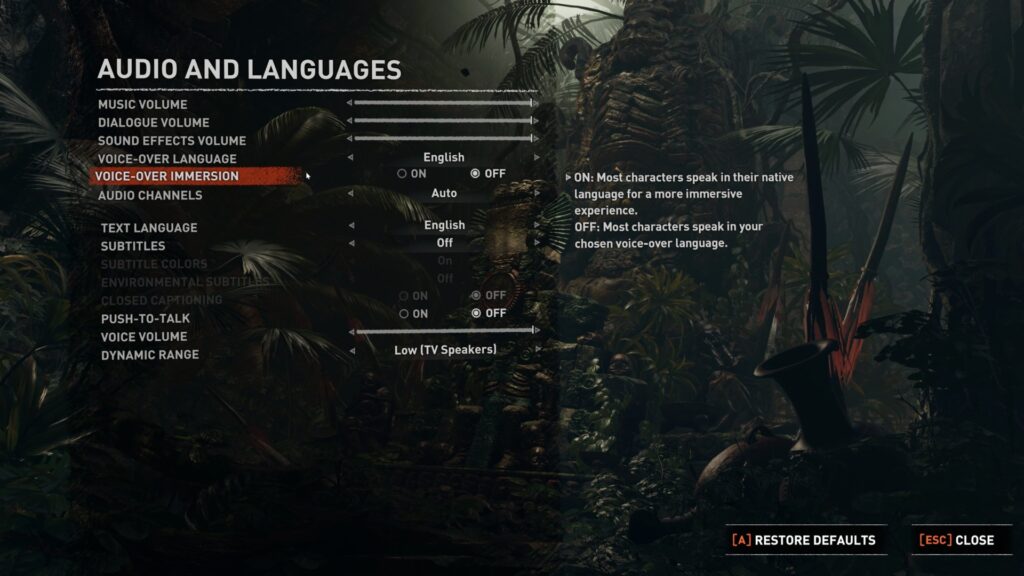In our first article, we delved into the meaning of the fictional pact and how it works for video games in terms of images, sounds, UX/UI, among others. These fundamental factors allow players to connect with games and enjoy them. But what’s the deal with the (invisible) elephant in the room: idiomatic localization and culturalization?
Culturalization as a Fundamental Process
These more classic immersion factors are steps in the production of a game that are more common and easy to detect. However, it’s interesting that the true key to immersion is being able to implement changes and adaptations without the user knowing they’re there. The task of modifying a game to be able to understand it according to the culture of the gamer is bittersweet because its quality lies mostly in the invisibility of its result.
The most identifiable example is typically seen in historical games such as Call of Duty, Medal of Honor, Civilization, among others. Kate Edwards notes:
“Inevitably something must be over-looked for the sake of gameplay and this is one aspect that is often noticed — the lack of detail in some manner, from costumes to locations to the series of events. The reality of employing history in games is a lot like a cartographer making a map: the world must be generalized (i.e., remove information) for the map to be useful for its intended purpose. Most maps don’t show every actual tree and other feature on the landscape, and so it is with games based in history.”

The author explains that the same thing often happens in other genres, such as sacred and secular cultures (religious examples being the most common) or cultural differences. These cases also carry the same logic: the localization and culturalization process lacks something. Guidance on these matters doesn’t just happen but is done professionally, and its purpose is to transmit a message to other cultures with that same intentionality.
The most frequent example occurs related to bodies, genders, and ethnicities. Over the history of video games, it’s rare to find minority representation, and if there is, it isn’t shown correctly, or they aren’t playable characters. They sometimes seem to exploit stereotypes of a particular culture. A notable example is Grand Theft Auto and how it paints Hispanic culture through gang members, drug traffickers, and people who commit crimes.

Ultimately, publishers and developers are making strategic decisions. The importance of building work teams that include a variety of voices and are dedicated exclusively to the culturalization process may not just have an impact from a marketing and sales perspective that attracts buyers who can truly identify with the product; it also brings us back to this article’s theme: it provides a more immersive experience.
The Role of Idiomatic Localization
Doing more precise culturalization work is just the first step. Language plays a fundamental role in the process of creating something that is accurate and immersive. We may not notice it in video games where it has been implemented well, but it’s a lot easier to remember examples where localization was not prioritized and its subsequent disastrous results.
One of those is Skyrim, which became famous worldwide for how weird some of the bards’ songs sounded, especially when translated into Japanese. As it was impossible for many players to be able to experience Skyrim fluidly, it led to the creation of community projects to generate the appropriate subtitles.
Nevertheless, the absence of professional localization can also produce difficulties. Despite being an award-winning title worldwide for its quality and the care taken by the studio to remove any errors, Hades features community-generated Spanish localization. Unfortunately, this has resulted in a “Spanish” dialogue where the characters use classic Buenos Aires slang such as “piba” (girl), only to end the sentence with an Iberian Spanish phrase such as “pirarse” (to leave).
There’s no doubt that this group of players had the best intentions in the world, and thanks to them, many Spanish-speaking people will be eternally grateful; but this doesn’t hide the fact that it is important to hire professionals who are able to adapt the language correctly and when necessary, convert it into neutral language that can be understood in countries with diverse vocabularies.
The opposite case is the little-noticed Shadow of the Tomb Raider, the third reboot of the Tomb Raider series. In this game, Lara Croft has to traverse the legendary city of Paititi. The game comes with an “Immersion Mode” that can be activated from the start: when that happens, instead of hearing all the characters speak English, Lara is able to speak with the habitants of Paititi in Quechua (the language of the Mayans) or hear the people from Peruvian cities speaking perfect Spanish from that area. In fact, we can improve Lara’s language proficiency so that she learns to communicate better.

Language is so important that it doesn’t just impact the dialogues. It’s also present in menus and scene graphics. Understanding the correct use of an item or how to read a trail could be vitally important for immersion and enjoyment of the game we’re currently playing.
The Takeaway
Although in today’s world video games are a step ahead of other audiovisual creations in terms of “connecting” with them, there’s still a lot of work to be done. Fortunately, there are more and more specialists we can count on to make the final product more inclusive, immersive, and enjoyable.
More and more companies are willing to reach out for localization help, from thinking about what a translation to another language would look like and how to understand it to fundamental culturalization issues in the areas of inclusion and accessibility.
In a time where the evolution of video games is measured in leaps and bounds, ensuring that a video game is immersive is an economic and artistic need, but above all, it is a human need.



